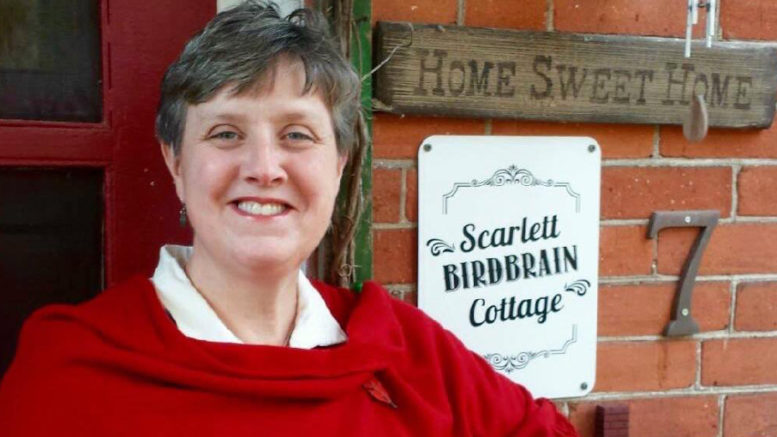Laurie Snider
Notes from the Nest
The formal dining room in our home is a central feature with access to the living room, kitchen, sunroom and spare room and has a large window overlooking our deck. Generally, it’s home to a diverse collection of furniture gathered over the years, a large farm-house table with six chairs, two cabinets for storing china, a sideboard, a settee and an antique rocking chair. When it was built with our home in 1885, it would have been considered a necessity.
Humans are unique in being the only species with designated places for eating, whether it be surrounded by a group in a humble hut on mats or seated around a table. We have specific rituals associated with taking our meals including passing around steaming platters or dishes, lifting lids and serving, receiving and eating our food.
This past Sunday for Easter we removed some of the furnishings and squeezed in an extra table and seating to accommodate a convivial blending of family and friends. There were 15 of us in total who were there to relish a savoury, home cooked meal, converse, chatter and catch up and largely delight in a little springtime revelry amongst those we cherish.
Our daughter Ellie and daughter-in-law Sarah and I spent several days preparing. We readied food, baked pies, lay pretty cloths on the tables, set out our best dishes, cutlery and glasses and adorned the tables with flowers and Easter decorations we’d gleaned from Pintrest. Certainly, more effort was required than usual but back of mind were the words of 18th century epicurean writer, Jean Anthelme Brillat-Savarin, “When you invite a man to dinner never forget, during the short time he’s under your roof his happiness is in your hands.”
The Greeks were among the first to enjoy feasting in specialized rooms together on couches made of stone or wood. Only men were allowed as they treated themselves to honey cakes, chestnuts and wine. The exclusive rooms the Romans ate in were called a triclinium. This time women were welcome too with some meals enjoyed outdoors.
During the middle ages upper-class Europeans and nobility who owned castles and manor houses dined in the great hall. Their hooplas were rowdy, bustling affairs with a considerable guest list, given that even servants attended. The family sat at the head table which was on a raised dais and the rest of the guests were seated at tables in diminishing order of rank. Most tables were planks set upon trestles which interestingly is where the term, ‘set the table,’ originates from.
In case you were concerned about a lack of decorum at these soirees, not to worry each table was draped with a proper tablecloth. Unfortunately, napkins hadn’t yet been invented so diners would simply use the tablecloth. They also shared cups and platters, speared meat with their knives and slurped soup from their bowls. Catalonia theologian, Francesc Eiximenis was on top of things though admonishing, “If you have spat or blown your nose, never clean your hands on the tablecloth. If you need to spit, do it behind you, never on the table or anyone else.” Good advice!
Any fans of Downton Abbey will be well aware of the importance of the dining room in the Victorian age. They were sumptuous, opulent, luxurious rooms, with elegant furnishings, exquisite china, handsome silver or gold cutlery and fine stemware – and servants. Meals were often two courses and dessert but each course could provide upwards of 25 different dishes. Sugar sculptures resembling gardens and pastoral scenes were used as backgrounds for sugared fruits, jellies, jams and sweetmeats.
After the meal the women would retreat to the drawing room for tea and the men would stay in the dining room for drinks and cigars. During this time any reference to the shape of females was considered scurrilous including the table legs, so they were kept covered and out of sight lest they excite the gentlemen!
According to recent research as families spend less time sitting down to eat together, the importance of dining rooms has declined. Many modern homes are built without them. Although most of our sustenance is eaten at our much smaller kitchen table, I can’t help but smile when I think of the multiple feasts, fetes, hoodangs and wingdings we’ve celebrated with our loved ones over the years in our dining room. We’ve marked birthdays, anniversaries, holidays and achievements, nurtured family bonds, strengthened relationships, taught, learned, eaten and revelled in lively, inspiring, provocative conversations. No matter the fare, spending time with those dear to break bread is no small thing.

